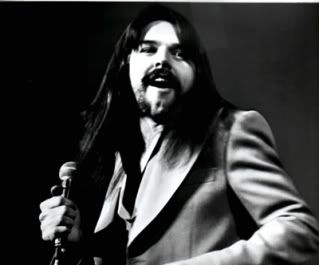
Bob Seger recorded his legendary "Live Bullet" album
at Cobo Hall in Detroit.
By STEVE SEYMOUR
Several of the greatest live rock 'n' roll albums ever issued were taped in Michigan.
Bob Seger's "Live Bullet," J. Geils Band's "Full House" and "Kick Out The Jams," by the MC5 were influential when they were issued and still stand out today.
All three memorable long-players were committed to vinyl during legendary performances at Detroit-area venues.
The infectious energy created by the performers and audiences jumped off the grooves when those records were played on the radio, at home or at parties.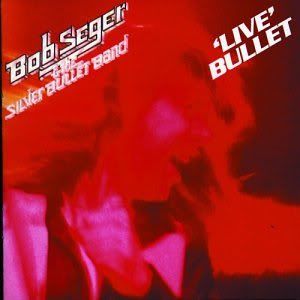
Released in 1976, "Live Bullet" earned Seger the national recognition that had long been denied him.
Although "Ramblin' Gamblin' Man" reached No. 17 in 1969, Seger's popularity had been largely confined to Michigan and Florida.
He toiled in the rock 'n' roll trenches, playing small venues for a decade and recording a series of outstanding singles and albums largely ignored beyond his home base.
Seger took selections from five of his albums and added the single "Lookin' Back" for the "Live Bullet" setlist.
The 14-track album was recorded at Cobo Hall before 24,000 crazed fans on Sept. 4 & 5, 1975 by Metro Audio.
WWWW-FM radio personality Dan Carlysle was succinct in his introduction: "You are here because you want the real thing. Let's bring on Bob Seger & the Silver Bullet band. Now."
Seger's no-nonsense opening was Tina Turner's "Nutbush City Limits," which was released as a single from the album.
Seger played many of his own gems including "Travelin' Man," "Beautiful Loser," "Turn the Page," "Heavy Music" and "Katmandu."
Although Seger had a cache of originals, the band performed Van Morrison's "I've Been Working" and paid tribute to Elias McDaniel with the classic "Bo Diddley."
The killer show ended with an extended version of "Let It Rock," written by Chuck Berry under the pseudonym E. Anderson.
Packaged with a photo of Seger shaking his long locks under red and yellow lights, "Live Bullet" reached No. 34 setting the stage for the massive success of the next album, "Night Moves." 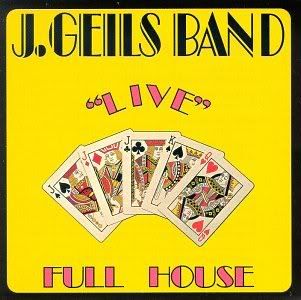
If the wild excitement of "Live Bullet" could be topped, "Full House" might be the record to do it.
The live album was recorded on April 21 & 22, 1972 at the Cinderella Ballroom in Detroit, despite the fact J. Geils and his bandmates hailed from Boston.
Like Seger's album, "Full House" was recorded on location by Metro Audio.
The band was firmly rooted in rhythm and blues in 1972 and a decade away from releasing the chart-topping "Centerfold."
"Alright! Are you ready to get down? I said are you ready for some rock 'n' roll? Let's hear it for the J. Geils Band," said the announcer as the sextet launched into "First I Look at the Purse."
Written by Robert Rogers and Smokey Robinson, the song was a minor hit for the Contours in 1966.
Magic Dick's extraordinary harmonica playing dominates the record in a way the instrument was seldom used at that time.
Peter Wolf sings like a maniac and Geils wails on his guitar, the sound nearly out of control.
The setlist includes two tracks written by Juke Joint Jimmy, "Whammer Jammer" and "Cruisin' For a Love."
Wolf and Geils add their own composition, the rocking "Hard Driving Man," while John Lee Hooker's "Serves You Right to Suffer" jams for nearly ten minutes.
The "Full House" album cover pictures a poker hand with three Jacks, a King and Queen. Card players will realize, however, that a full house comprises three of a kind and a pair.
Perhaps the "Full House" refers to the crowded venue, but the Queen is obviously winking.
The cover was conceived and designed by Wolf and drummer Stephen Jo. Bladd.
Released later in 1972, the album charted at No. 54 but quickly gained a lasting reputation as an unbeatable party album.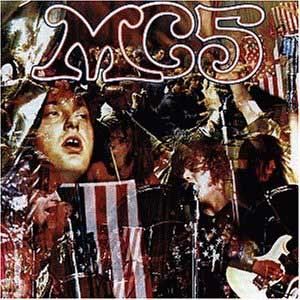
The Motor City Five, meanwhile, were dead serious with their live LP, "Kick Out the Jams."
The radical group did just that on the debut album, recorded on Oct. 30 & 31, 1968 (Devil's Night and Halloween) at "Uncle" Russ Gibb's Grande Ballroom in Detroit.
Brother J. C. Crawford delivered an inspiring introduction about the impending youth revolution. He ended with "I want to know, are you ready to testify? I give you a testimonial. The MC5!"
With that lead singer Rob Tyner dove into "Ramblin' Rose," the first of eight tracks on the record.
"Right now it's time to kick out the jams," Tyner shouted before launching into the title song, adding a 13-letter expletive.
For the rest of the program, the MC5 performed a number of incendiary originals including "Rocket Reducer No. 62 (Rama Lama Fa Fa Fa)," "Borderline," and "Starship," a jam which included lyrics from Sun Ra.
Like the J. Geils Band, the MC5 also included a John Lee Hooker song. Written by Al Smith, "Motor City Is Burning" had been recorded by Hooker the previous year and included on his album "Urban Blues."
A psychedelic collage of photos by Joel Brodsky, showing the group in concert, became the album cover.
While the group and manager John Sinclair insisted Elektra Records retain Tyner's vulgarity, the record company wanted it deleted.
Both versions of the album were issued but the controversy turned Elektra against the group.
The censored version of "Kick Out the Jams" was paired with "Motor City Is Burning" for a single which reached a disappointing No. 82 in the spring of 1969.
After giving "Live Bullet," "Full House" and "Kick Out the Jams" a fresh listen, it's evident they retain their luster and remain among the greatest live albums ever released.
Don't take my word for it. Give them a spin yourself.

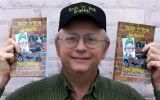
 I've enjoyed rock music and writing since I was a teenager in the 60s. I feel lucky to have been around when rock's greatest stars created their most enduring hits. At the same time I found I enjoyed writing, as well. I worked on my high school newspaper and magazine, was editor of several college publications and earned a bachelor's degree from Central Michigan University in 1973. I worked for the daily newspaper in my hometown after graduating, becoming managing editor after a few years. By the 1980s, I moved into public relations. In 1985, my wife Sue and I opened a retail music store, The Record Rack, which we still own. Rock 'n' roll has been integral to me and for the last 2O years I've been earning my living from it even though I don't have a musical bone in my body. In recent years, I've also I edited a small local magazine and launched a micro FM radio station. Now, I'm finally combining my love of writing and rock 'n' roll. I can't sing a note, but I know what I like. I'll tell you all about it when you read on. I hope you have as much enjoyment reading these installments as I've had writing them.
I've enjoyed rock music and writing since I was a teenager in the 60s. I feel lucky to have been around when rock's greatest stars created their most enduring hits. At the same time I found I enjoyed writing, as well. I worked on my high school newspaper and magazine, was editor of several college publications and earned a bachelor's degree from Central Michigan University in 1973. I worked for the daily newspaper in my hometown after graduating, becoming managing editor after a few years. By the 1980s, I moved into public relations. In 1985, my wife Sue and I opened a retail music store, The Record Rack, which we still own. Rock 'n' roll has been integral to me and for the last 2O years I've been earning my living from it even though I don't have a musical bone in my body. In recent years, I've also I edited a small local magazine and launched a micro FM radio station. Now, I'm finally combining my love of writing and rock 'n' roll. I can't sing a note, but I know what I like. I'll tell you all about it when you read on. I hope you have as much enjoyment reading these installments as I've had writing them.


1 comment:
Great post but I think youhave them in reverse.... MC5 FULL HOUSE THEN BOB
Post a Comment